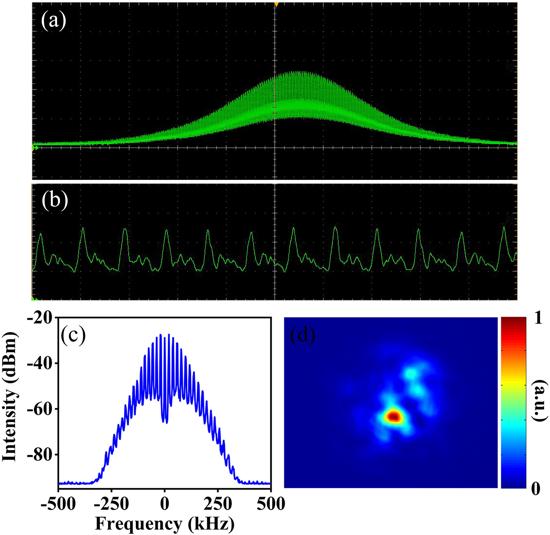Nowadays, the multimode fiber (MMF), which was overlooked for decades, is making a strong comeback since it not only has broad applications in fields of optical communications, imaging, metrology, spectroscopy, and three-dimensional nonlinear phenomena, but also is served as the medium for new high-energy pulse laser technology. The MMF has a large core diameter and therefore can withstand higher nonlinearity. Compared with the conventional single-mode fiber laser, the mode-locked MMF laser is able to improve the single-pulse energy by more than two orders of magnitude in theory, which brings new opportunities for high-energy laser technology and will be important for both fundamental research and practical applications.
At present, the investigation on MMF lasers is still in its infancy, mainly focusing on the generation of continuous mode-locked pulses. In fact, there are two other types of pulses in lasers, namely Q-switched and Q-switched mode-locked (QML) pulses. Compared to continuous mode-locked pulses, Q-switched pulses and QML pulses have the advantage of higher pulse energy. Based on this feature, the Q-switched or QML technology is expected to achieve the higher-energy pulse in the MMF lasers. In addition, since Q-switched and QML pulses have the advantages of tunable and low repetition-rate, they can alleviate the heat accumulation better in practical applications.
The research group led by Prof. Ai-Ping Luo from South China Normal University reported the generation of QML pulses in a MMF laser with an all-fiber structure. The results are published in Chinese Optics Letters, Volume 19, Issue 12, 2021, (J. Wu et al., Q-switched mode-locked multimode fiber laser based on a graphene-deposited multimode microfiber).
The characteristics of the Q-switched mode-locked pulse are shown in Figure 1. In this work, a self-made graphene-deposited multimode microfiber (GMM) device was utilized as a saturable absorber to generate multimode QML pulses. This device makes full use of the unique characteristics of the evanescent field of the multimode microfiber, which increases the interaction length between the light and the saturable absorption material, and thus leads to a higher damage threshold. In addition, the modulation depth and non-saturable loss of the device are large, which are favorable for the generation of QML pulses. Meanwhile, benefiting from the filtering characteristics of the device and the inherent multimode interference filtering effect in the laser cavity, tunable single-wavelength and dual-wavelength high-energy QML pulses are achieved in the laser. This flexible and tunable laser has potential applications in the fields of laser processing, optical sensing, and measurement.

Fig. 1 The characteristics of the Q-switched mode-locked pulse. (a-b) The pulse-train; (c) the radio-frequency spectrum; (d) the beam profile.
The GMM device proposed in this work is a key component to generate high-energy QML pulses. It has advantages of the simple and compact structure, low cost, good saturable absorption characteristics and controllable nonlinearity, etc. In the MMF lasers, it can be employed to generate not only QML pulses, but also Q-switched pulses, continuous mode-locked pulses, and even supercontinuum.
In the future work, it is possible to engineer the nonlinearity by designing the structure of the multimode microfiber and the deposition amount of graphene. We could make full use of its nonlinear effect to further improve the MMF laser performance, such as the Kerr self-cleaning effect in the MMF, which can promote the generation of QML pulse with high beam quality. Meanwhile, owing to the broadband saturable absorption characteristics of the graphene, the GMM can be applied in the MMF lasers in other wavebands to generate high-energy QML pulses. Besides, the device will also be placed in the MMF lasers to generate spatiotemporal mode-locked pulses with high beam quality and manipulate its spatiotemporal properties.


